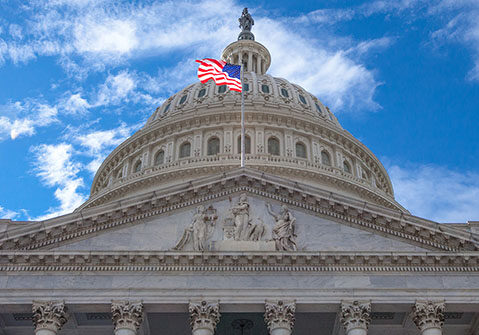Discretionary Spending
Discretionary spending represents almost 30 percent of total federal spending and funds a wide variety of programs, including defense, education, and transportation. Outlays in this category are split roughly evenly between defense and nondefense spending, which is set by Congress through the annual appropriation process.

Comparison Table
Comparison of Discretionary Spending Policy Proposals
How the Proposed Discretionary Spending Plans Compare
Three organizations — AEI, BPC, and CAP — keep overall discretionary spending at or below CBO’s baseline level by 2054. The other four participants have discretionary spending growing more than the baseline. AAF proposes only slightly higher levels; EPI, MI, and PPI propose more growth, with PPI generating the highest total as a percentage of GDP by 2054.
For defense discretionary spending, organizations have different approaches:
- Two organizations propose increases in defense spending (AAF and AEI)
- Four organizations would limit its growth by a set amount (BPC, CAP, EPI, and MI)
- PPI mostly adheres to the baseline but encourages that spending be done more efficiently
CAP, EPI, and PPI suggest overall boosts to nondefense discretionary spending relative to current law. In a few cases, organizations added funding for specific programs in the nondefense discretionary category. For example, CAP and PPI increase funding for education and apprenticeship programs. BPC would limit growth in nondefense discretionary by 1 to 2 percent each year over the period; MI would limit growth by 3.5 percent each year over the period.
Further Reading
Budget Basics: National Defense
The national defense budget funds a wide range of activities and represents a significant share of overall federal spending.
How Is K-12 Education Funded?
Public schools for students in kindergarten through 12th grade are financed through a combination of local, state, and federal dollars.
What Are Caps on Discretionary Spending and Do They Work?
Let’s look at the trends in discretionary spending and how effective caps are in reducing the debt.



